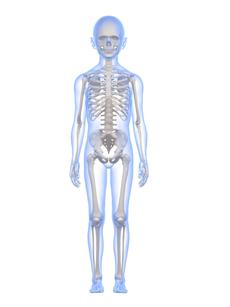Structure and function of bones
Author: Dr. med. habil. Gesche Tallen, erstellt am: 2013/04/12, Editor: Maria Yiallouros, English Translation: Dr. med. habil. Gesche Tallen, Last modification: 2017/08/28
The human body is upheld by a skeleton consisting of more than 200 different bones. Depending on where they are located and what their function is, bones look different.
Bones have a variety of major functions.
- They participate in all of the body’s movements; our muscles, ligaments, joints and bones all work closely together so we are able to move.
- They protect the inner organs from injury – like the skull protecting the brain and the rib cage protecting the heart and lungs.
- They contain the bone marrow, where the red and white blood cells as well as platelets are made.
- They store calcium and phosphorus, thereby playing a major role in mineral metabolism.
The adult skeletal system is mostly bony, whereas in children and adolescents it is also made of cartilage – in an age-dependent manner, since the majority of bones initially develops from cartilage and turns into bony tissue during ongoing development.
Skeletal development, thus substitution of cartilage by bony tissue, already begins in the embryo (in about week six of pregnancy) and continues until beyond age 20. Since this process of ossification requires numerous cell divisions, one or the other of them might go wrong, for example by wrong information being passed on from one bone cell generation to the next or even by losing inherited material. As a result, bone cancer might develop.
In order to help you better understand bone cancer and associated treatments, we would like to provide you with the following overview about what our bones are made of and how they work. The following chapter does not claim completeness. It rather serves to provide some general information on bones.

